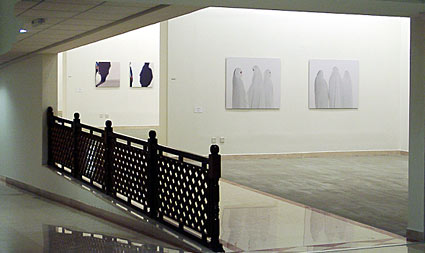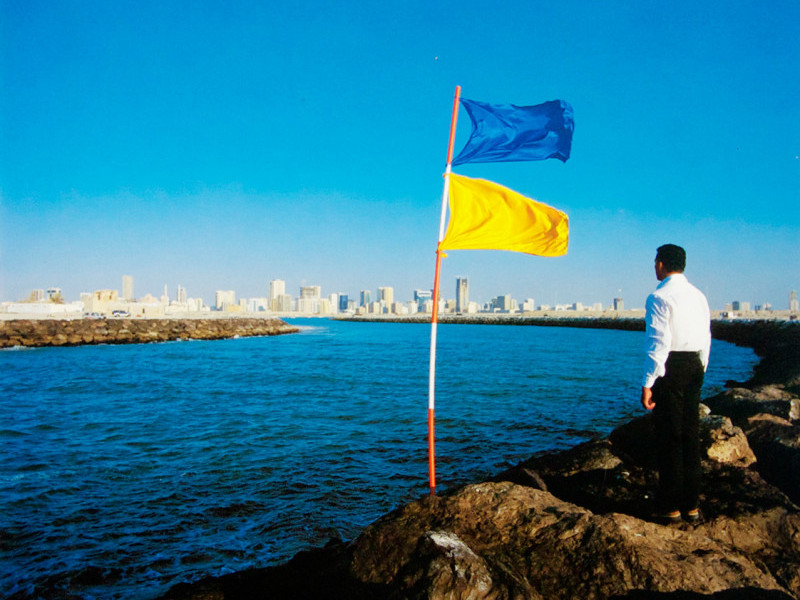
Behind the veil, 2000-2001
Zineb Sedira
Behind the veil, 2000-2001
C-prints mounted on aluminium
search


Zineb Sedira
Behind the veil, 2000-2001
C-prints mounted on aluminium
The art of Zineb Sedira is clearly autobiographical, but not without universal appeal. Born in 1963 to Algerian immigrants, the London-based artist was brought up in the suburbs of Paris following the Alqenan liberation from France. The events of this turbulent period and the resulting animosity towards the Algerian community have been a driving force throughout Sedira's work.
Sedira's Self Portrait 1 (1999) is about the veil and the Muslim female gaze. The veil here serves as a metaphor for "veiling the mind" whether through censorship or self-censorship; its absence represe~t§ a willingness to face dilemmas and to negotiate the multiple layers of one's consciousness. The eyes in Self Portrait 1 are voyeuristic and powerful rather than compliant. The physical veil in the photographs has been gently effaced to emphasize the eyes, and to let the body merge into the background, like the walls of the whitewashed houses that become another metaphor for th veil. By escaping their mask, they subvert the role of the veiled woman. "Open to be gazed at, it is also the part that is free to look, to think without being judged, silent sight, silent witness, to see but not be seen."
In Made in England: Miss Holmes (1999), Sedira transgresses the traditional codes of dress among North African Muslim women to explore issues of cultural memory, sexuality and nostalgia. As in earlier works, Sedira uses Islamic geometric designs to reclaim a traditionally masculine art form. By covering the 1960's stiletto-style high heels, with Islamic Arabesques, Sedira re-territorializes the feminine and inserts it into a masculine form. As a fetishized form, the high heels may signal subordination, while emphasizing erotic allure. The repetition of Islamic patterning provides Sedira with a means of continually repositioning herself, her cultures, as "it plays with clear and unclear, between existing and disappearing."
Don't Do To Her What You Did To Me 1 (1998), is a video installation which reinterprets the tradition of Islamic healing charms, using a mixed media of ink, water and passport photographs of a woman's fae . The title of the work comes from a phrase uttered by a woman on the verge of death, used to exorcise the conflicts between Western and Muslim cultures. Mothers often use it to protect their young girls from becoming 'too French,' rather than good Muslims.
The art of Zineb Sed ira draws our attention to the problematics of cultural appropriation and questions our understanding of fixed categories of East/West, and our perception of gender and sexuality in Muslim societies. It questions our ability to sustain a permanent position either inside or outside of a place, a culture or a memory.

Sharjah Biennial 6